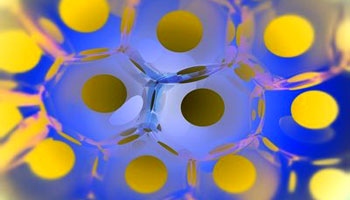 Leukocytes are the part of lymphatic system which helps in body defense mechanisms
Leukocytes are present in the lymphatic system and the blood, traveling to infected tissues and/or organs to attack the cause of the infection.
Leukocytes are the part of lymphatic system which helps in body defense mechanisms
Leukocytes are present in the lymphatic system and the blood, traveling to infected tissues and/or organs to attack the cause of the infection.
Closely connected with the blood and circulatory system, the lymphatic system is an extensive drainage system that returns water and proteins from various tissues back to the bloodstream. Some scientists consider this system to be part of the blood and circulatory system because lymph comes from blood and returns to blood, and because its vessels are very similar to the veins and capillaries of the blood system. Throughout the body, wherever there are blood vessels, there are lymph vessels, and the two systems work together.
As blood circulates under pressure, its fluid component (plasma) seeps through the thin wall of the capillaries into the surrounding tissue. Much of this fluid, called interstitial fluid, returns to the blood through the capillary membranes. The remainder of the interstitial fluid, now called lymph, flows from the spaces in connective tissue into a network of tiny open lymphatic capillaries and then into a series of progressively larger collecting vessels called lymphatic vessels.
The largest lymphatic vessel, the thoracic duct, empties into the left sub-clavian vein near the heart. In this way, the lymphatic system captures fluid lost from the blood and returns it to the blood, thus ensuring steady‐state levels of fluid within the circulatory system. The heart does not pump the lymph through the lymphatic system; instead the flow of lymph is achieved as the lymph vessels are squeezed by movements of the body’s muscles. A series of one‐way valves along the lymphatic vessels ensures that lymph flows only in one direction.